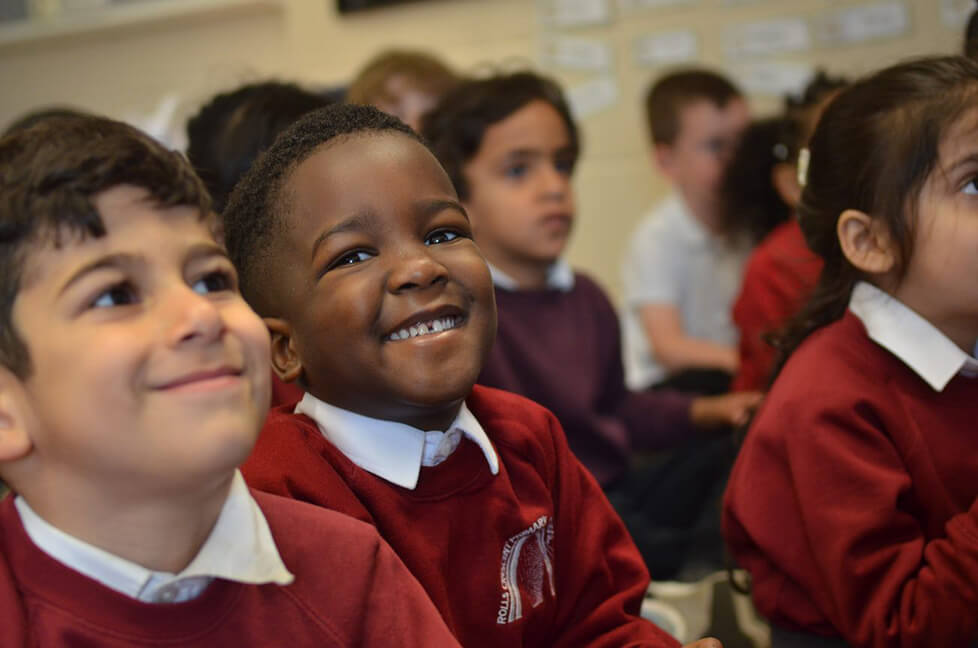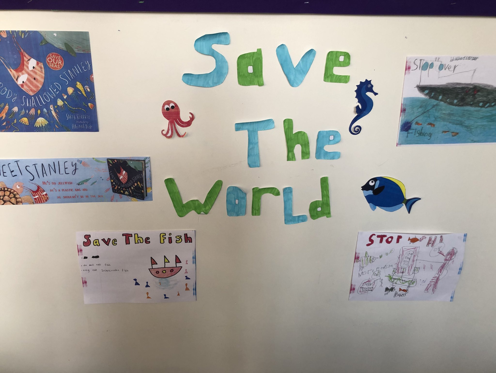“Teaching writing is a balancing act; real time and space need to be created for developing children’s knowledge about language and the ability to use and apply this knowledge creatively and effectively. The balance between process and product also need to be considered, and the relevance, purpose and pleasure in writing highlighted, so that young learners experience writing as meaningful and see themselves and their teachers as writers with something to say and the means to say it”
Teresa Cremin, Motivating Children to Write with Purpose and Passion (2017).
Consider the last five things you have written – what were they? Mine would be: this blog; my to do list; the address on an envelope; a Christmas card and my signature on a form. Although each vastly different forms of writing, they are united by the fact they each have a purpose. Whether to communicate love and affection; inform or reflect, when we write as adults, we always write with purpose. Even when writing creatively, we may be writing with the explicit purpose of gaining enjoyment from the act or unleashing our creativity.
Much of the teaching of writing is naturally given over to learning how to write for specific purposes. However, too often, we do not provide a real, authentic audience and purpose for children’s writing. We may teach the features of a report, but not really delve into who that report is being written for or why it is being written in the first place. As our experiences of writing in adulthood show, having a real understanding of your audience and purpose is key to getting your point across. Think about a complaint letter you have written. It is unlikely to have included every taught feature of a complaint letter, but what it will have done is use language appropriate to its audience – the company you are complaining to – and its purpose – to complain about the service you received and express your dissatisfaction. By understanding your audience and purpose, you can mould your language, and most importantly your tone, to make your writing successful.
But writing effectively is not the only reason why writing with purpose is important. For some pupils, the simple act of writing for their teacher, or writing being a school activity, is sufficient encouragement to write. For others, who may be reluctant writers, we have to put in place strategies to support their engagement and enjoyment of writing. For both groups, truly great writing will only emerge when the pupils are confident, engaged writers who take pleasure in their craft. So, what can we do to support this? The answer, is to make writing powerful.
Young and Ferguson (2021) argue that, “Authentic and purposeful writing projects have the power to secure young writers’ engagement and significantly contribute to positive academic achievements.”
It is the focus on authentic and purposeful writing that has impact. By giving pupils a concrete audience and purpose, a real person or persons to write for, they see the point of writing, they see the joy of writing. Having the chance to write for a wide range of audiences and see the impact of their writing can work wonders and result in truly effective writing. Bridgelea Primary School have used our Somebody Swallowed Stanley P.I.C.C. a Text units to inspire their own writing for purpose. Working on their UNICEF Rights Respecting Schools #OutRight project on climate change, they have created their own ‘Save our Seas’ posters to communicate the need to end plastic pollution. Their engagement with the topic, and their understanding of the power of writing with this purpose led to amazing writing outcomes, even commented upon by Somebody Swallowed Stanley’s author, Sarah Roberts.
Find them one Twitter: @BridgeleaSchool
Writing with a purpose can be powerful, but how can we put this into practice?
Here are our top tips for building purposeful writing into your whole curriculum:
1. Plan authentic writing opportunities:
The most important step is to interrogate what writing opportunities you already provide for children and whether you can build on these, making them more impactful. Children may already write for purposes, but are these real and authentic or are they forced? Are they school based or world based?
Using our R.A.F.T. structure can support you to think carefully about your aims for a writing unit and what you, in conjunction with the children, may want their writing to look like. Exploring the R.A.F.T. with children helps to focus in on the true purpose of their writing and what they want the result of their writing to be. Consider:
- The REASON for writing. Why are the children writing? What is their purpose? How authentic is it?
- The AUDIENCE for writing. Who are the children writing for? How real is it? What effect will this have on how they craft their writing?
- The FEATURES you may wish to include to make your writing effective for its purpose. What are the main features we need to include to make our writing effective for our audience and purpose? What shouldn’t be included?
- The TONE you may wish to use to get your point across. How do we want our writing to sound? Which tone is going to be effective for my audience and purpose? Why?
For example, if your writing unit is focusing on persuasive speech writing in UKS2, your R.A.F.T. may look like the following:
- REASON – to persuade the government to reduce their use of single use plastic.
- AUDIENCE – my local MP.
- FEATURES – persuasive language; expanded noun phrases to provide clarity; adverbial and prepositional phrases to add detail; use of cohesive devices; specific choice of words for effect.
- TONE – persuasive and passionate.
Although writing for a specific audience and purpose is not a key focus of the curriculum in EYFS or KS1, learning to write for a purpose is still an important part of becoming a writer.
If modelling writing in EYFS, R.A.F.T. can be a useful way to plan your writing outcome. If engaging in some factual writing of labels and captions, staff could discuss the following R.A.F.T. when planning, sharing the purpose of writing with children:
- REASON – to inform parents/carers about endangered sea creatures.
- AUDIENCE – parents and carers.
- FEATURES – simple sentences, phonically plausible spellings.
- TONE – factual.
In KS1, if writing a letter to the author, your R.A.F.T. could be:
- REASON – to find out about Sarah Roberts’ job and share how we feel about the book.
- AUDIENCE – Sarah Roberts.
- FEATURES – letter format, use of questions, conjunctions to link ideas, specific choice of words.
- TONE – friendly.
By using R.A.F.T. to structure our initial planning, we can ensure real, authentic experiences are at the heart of our whole writing process.
2. Keep your purpose central throughout the writing process:
Carefully planning your R.A.F.T. and introducing an authentic purpose for writing is only half the battle. To make writing truly powerful we have to put purpose front and centre in our writing process.
In order for pupils to build agency as writers, they have to be supported to think like an author, making choices not because they show they can use their latest grammar learning, but because they are effective for their purpose. They can only do this if we prioritise purpose throughout, constantly referring back to the R.A.F.T. and how our purpose affects our writing. By planning in opportunities to read as a writer, pulling apart texts, ranking their effectiveness and discussing how successful they are, we can switch focus from grammar spotting to real writing. When capturing our ideas for writing, we can scaffold pupils to choose the content most appropriate for their purpose and audience, so that when they write, they really write with their purpose in mind. After writing, feedback from their peers, staff and others, can focus on how effectively we have written for our purpose and audience. It can focus on the impact of their writing.
Keeping the focus on purpose will inevitably lead to higher quality outcomes, but more importantly, it keeps the children invested in why they are writing. They are not writing for their teacher, or just because it is school, they are writing for a purpose, a purpose that will make a difference.
3. Make sure you use your purpose:
Having a purpose for writing is only powerful when that purpose is acted upon. When children have published their writing, taking the time to ensure it reaches their intended audience is key. Although their audience may not always be able to reply, the act of sending their letter, or broadcasting their advert, makes writing real to pupils. When pupils do receive a reply, the effect is even more magical! Just imagine the power of receiving a reply when you write a letter to the Queen, or seeing that your leaflet about the plight of refugees and migrants has changed someone’s opinion on immigration.
4. Build in opportunities for choice:
Ultimately, we want pupils to enjoy writing, and to choose to write for pleasure. This can be a challenging mindset to encourage, but one which is well worth the effort. A sure-fire way to impact pupils’ enjoyment and investment in writing is to make their choices central to the process. As Cremin (2017) notes, “If given the choice, they [children] often use writing to reflect upon subjects that have relevance and interest to them, making links with popular culture and their inner affective existence. Through writing regularly about what matters to them, children experience the potential of writing more fully and invest more of themselves in the process.”
Choice may be achieved through giving children completely free reign over what to write and when, or, more easily, by including an element of choice in your teaching sequence. You could, for instance, discuss the reason, audience and tone for your writing, but leave the decision on what form in which to write, and which features to include to the children. Alternatively, you could discuss a topic, such as plastic pollution, giving the children choice over who to write for and why. They may surprise you with their choices. However, as a consequence of the directed way in which most school-based writing happens, children do not find making choices easy. Rather than just giving a choice, and expecting pupils to run with it, consider how you can support their agency as authors.
Writing with purpose is just one of the many foundations that underpin an excellent writing curriculum. Our three- part virtual course, Exploring the Writing Curriculum, will delve into best practice across the writing curriculum, building subject knowledge and providing opportunities to reflect on current provision.
Session one will focus on planning a writing unit using the One Education P.I.C.C. a Text approach and look at best practice in embedding writing opportunities across the curriculum.
Session two will investigate the teaching of grammar and spelling in context using high quality texts, including how to encourage children to use appropriate grammatical features for the audience and purpose of their writing.
Finally, session three will explore how to support children to write effectively, making choices as a writer, as well as how to instil a writing for pleasure culture across school.
Sessions can be attended individually, or as a series, with a discount available for schools who attend all three sessions.
My previous blog, Writing for Reality Using the P.I.C.C. a Text Approach, explores our planning and teaching sequence in more detail. You may also find our FREE webinar, Planning a Writing Unit, and the accompanying resources linked in the blog, useful when considering how to develop your own approach to writing.
For more support on building writing with purpose into your teaching of writing, please contact me, laura.lodge@oneeducation.co.uk
















